Tue. Apr. 25, 2006
We (the TAs and I) have made some real progress on the
grading of the
1S1P reports. The most recently graded papers were returned in
class today. All of the reports turned in last week have also
been graded and were returned in class. Note that any report
revisions must be turned in by next Tuesday (the last day of classes in
this T Th section)
A copy of the Quiz #4 Study Guide was
handed out in class.
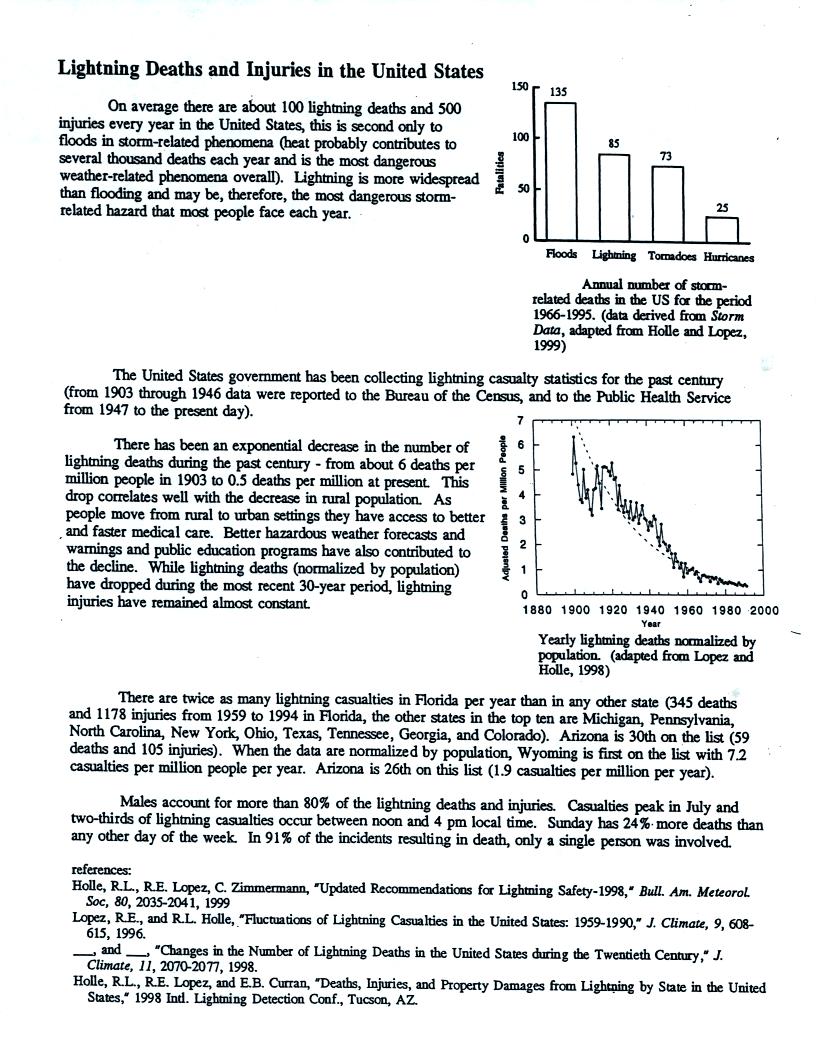
Rather than introducing today's topic Lightning with some grim
statistics (see above) the course instructor read from a recently completed literary work.
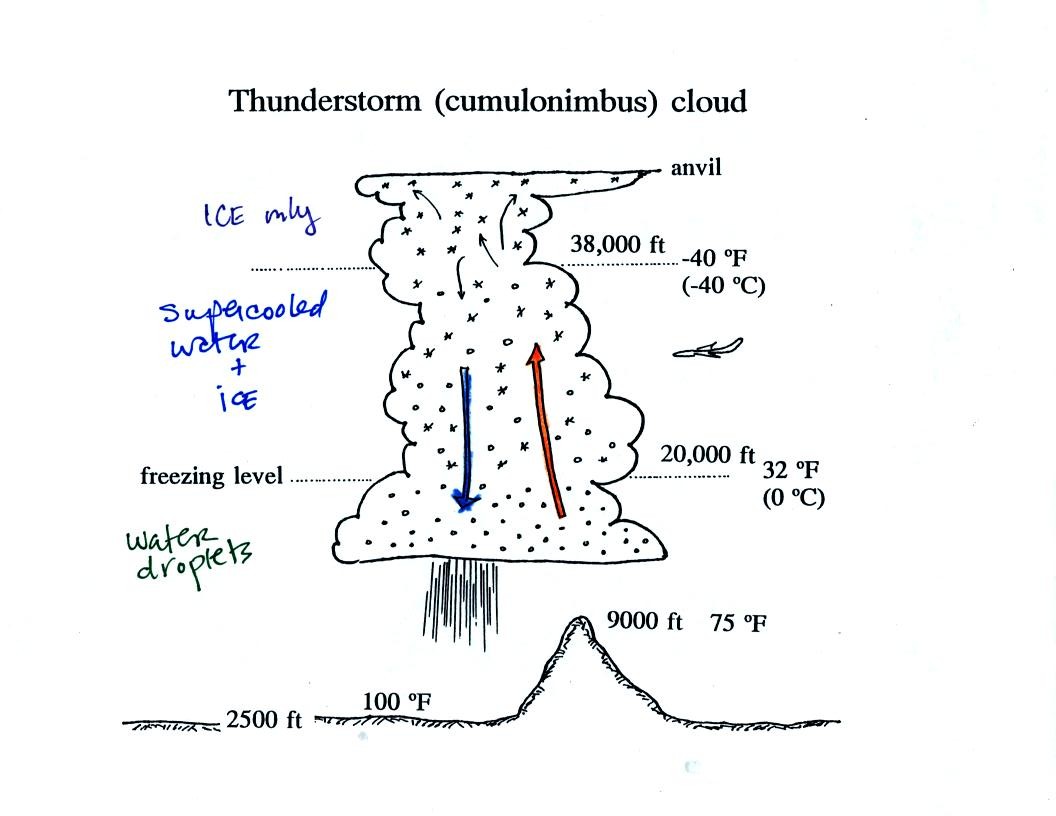
This is review. Thunderstorms easily climb above
20,000
feet altitude, so even on the hottest day in Tucson, these clouds will
contain ice crystals. The mixture of supercooled water droplets
and ice crystals in the middles of clouds was important in the ice
crystal process of precipitation formation. It is also important
in generating the electrical charge needed for lightning.
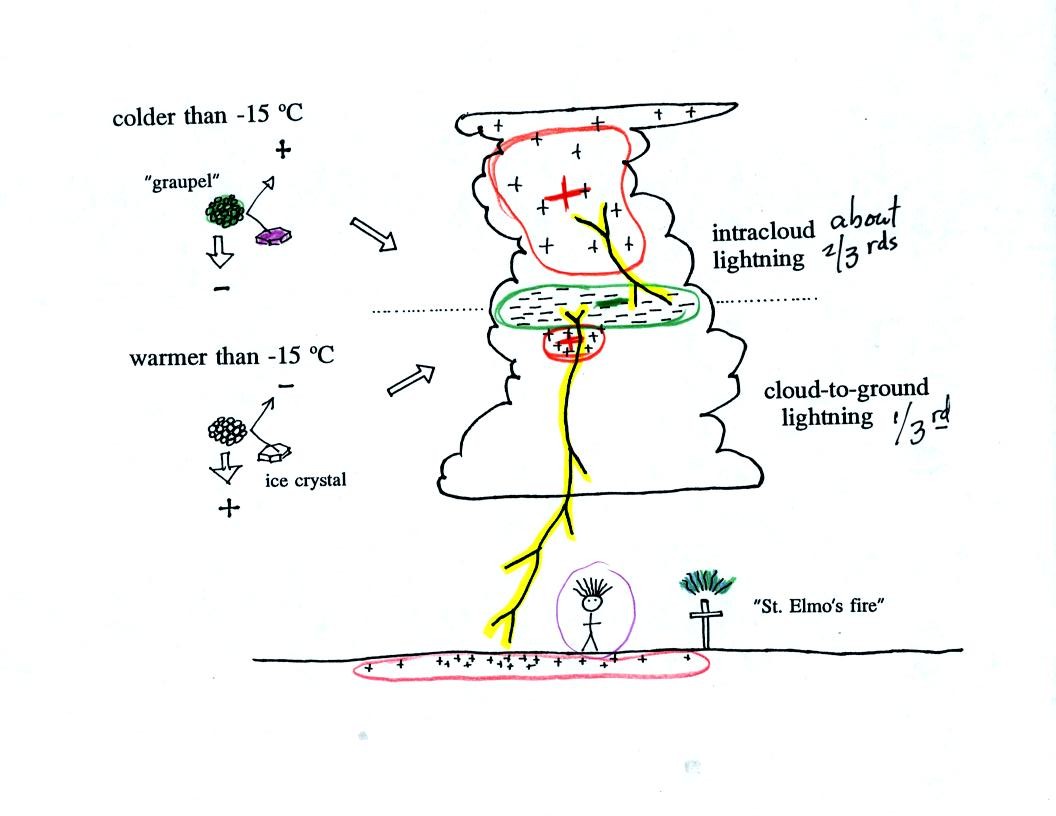
Collisions between precipitation particles produce
electrical
charge. When graupel and ice crystals collide at temperatures
colder than -15 C the ice crystal is positively charged and is carried
toward the top of the cloud by the updraft. The graupel ends up
with a negative charge and creates a layer of negative charge in the
middle of the cloud. At temperatures warmer than -15 C (but still
colder than freezing) the polarity of the charging is reversed.
Small
pockets of positive charge are found below the main layer of negative
charge. Note also the positive charge that accumulates in the
ground under the thunderstorm. The electrical attraction between
objects on the ground can create some interesting phenomena. We
saw a slide of a woman standing on a mountain ridge under a
thunderstorm. Her hair was standing on end (a dangerous
situation). A faint blue
green glowing discharge is sometimes visible on the tops of tall
objects under a thunderstorm. This is known as St. Elmo's Fire.
Intracloud lightning discharges between the main positive and negative
charged regions in the cloud is the most common type of
lightning. We are more concerned with and know more about cloud
to ground lightning because that is what kills people and causes
billions of dollars of damage to structures on the ground.
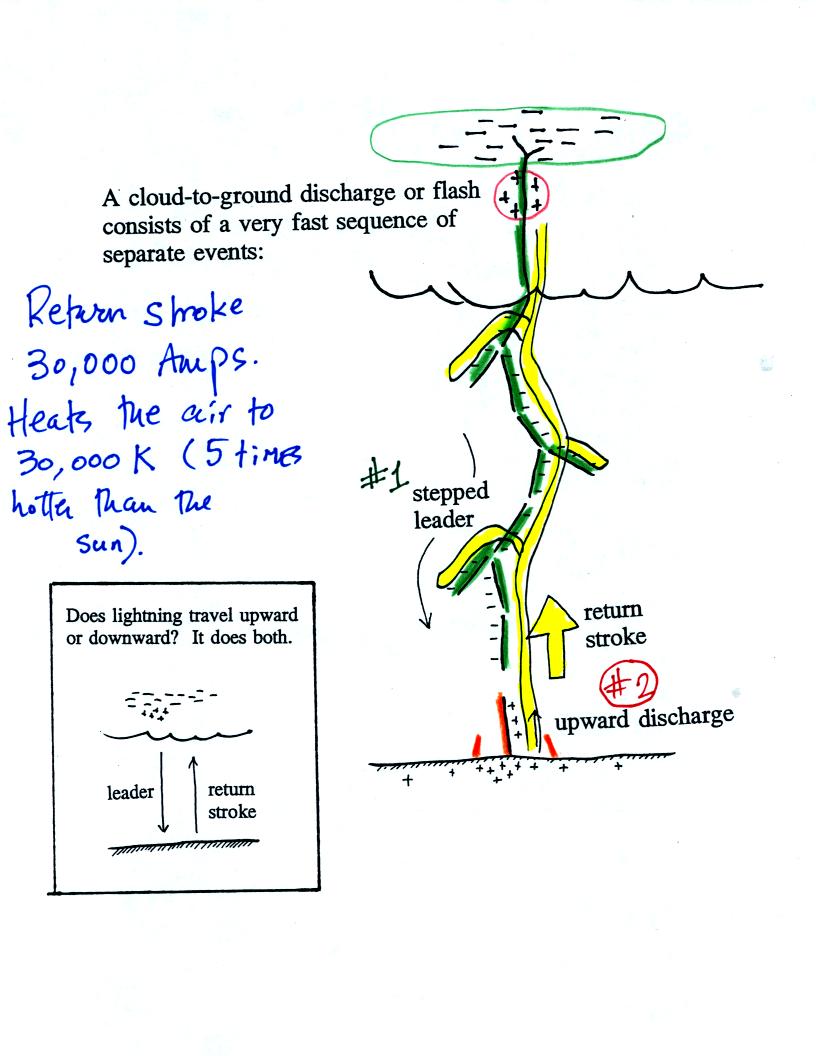
Cloud to ground lightning normally begins with a downward
moving
negatively charged stepped leader. It takes a 50 yard long jump
every 50 microseconds or so. It emits a short pulse of light
everytime it takes a jump. When the stepped leader nears the
ground a positively charged upward connecting discharge progagates
upward to meet the stepped leader. When they connect, the cloud
and ground are effectively short circuited and a very powerful spark,
the return stroke travels back up the channel to the cloud.
A "flip book" movie of a downward progagating stepped
leader, the
upward connecting discharge, and the upward return stroke was "showed"
in class.
About half of all cloud-to-ground lightning flashes consist
of a
stepped leader and a return stroke, that's it. In the other 50%
of the cases the process repeats itself.
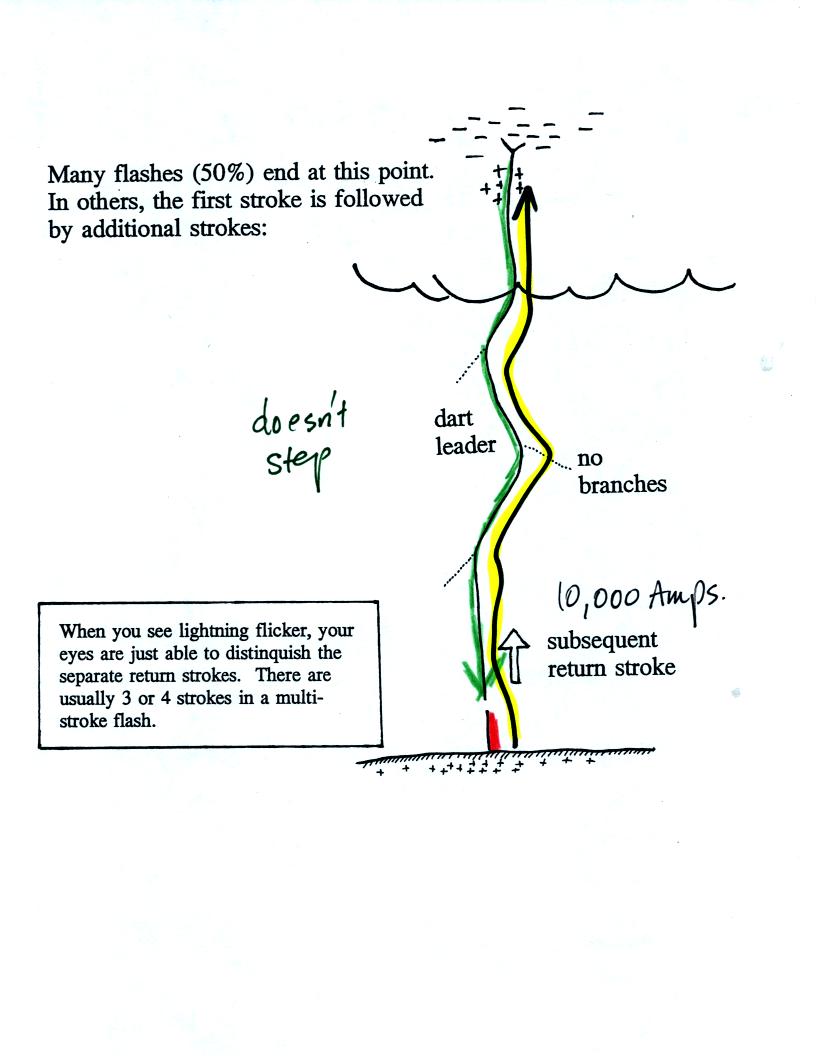
Instead of a stepped leader, a dart leader travels down the
channel
created by the stepped leader and first return stroke. The dart
leader doesn't step and doesn't go out into the branches. An
upward discharge intercepts the dart leader when it nears the ground
and a subsequent return stroke travels back up the channel into the
cloud.
Often this downward dart leader - upward return stroke combination is
repeated a 3rd and often a 4th time. The separate return strokes
are 0.05 (1/20th) to 0.1 (1/10th) of a second apart which is long
enough that your eyes see them as separate flashes of light. When
you see a lightning flash flicker, you are seeing the separate return
strokes.
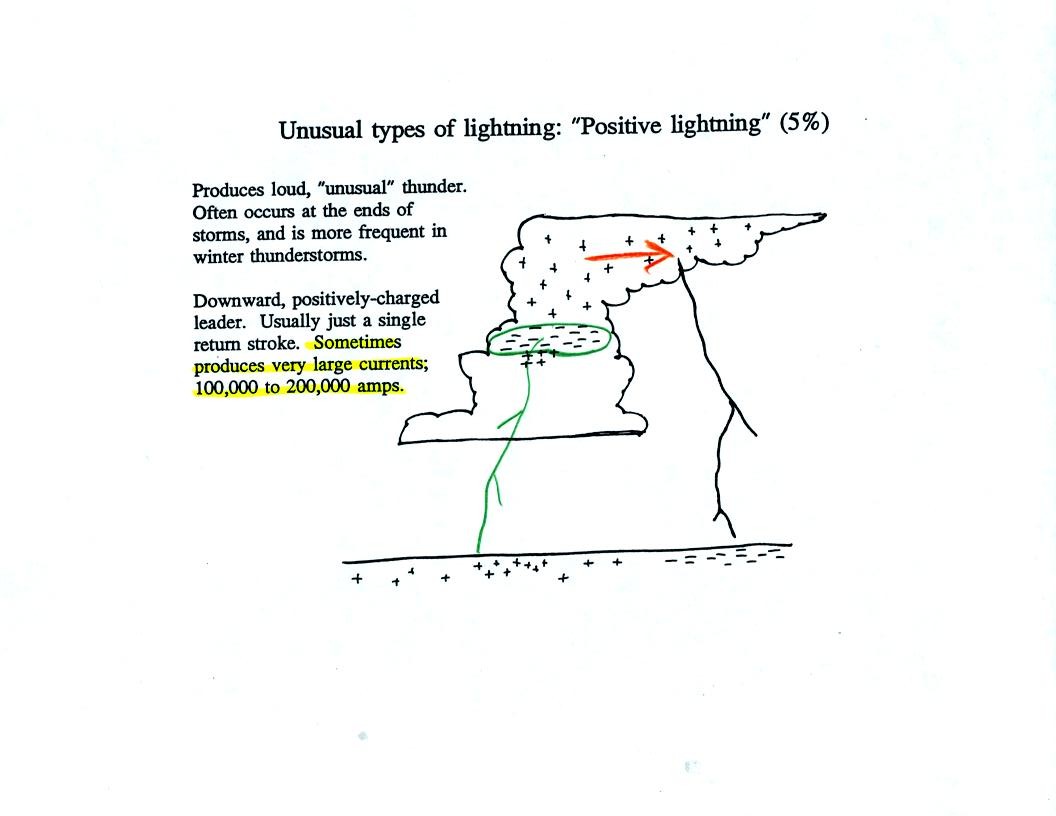
Occasionally a lightning stroke will travel from the
positive charge
region in the top of the thunderstorm cloud to ground. These
types of strikes are more common at the ends of storms and in winter
storms. This is probably because the top part of the cloud gets
pushed sideways away from the middle and bottom portions of the
cloud. Positive strokes are very powerful. They sometimes
produce an unusually loud and long lasting clap of thunder.

Lightning sometimes starts at the ground and travels
upward.
Upward lightning is generally only initiated by mountains and tall
objects such as a skyscraper or a tower of some kind. The process
begins with an upward leader (#1) which is then followed by a downward
leader (#2) and then an upward return stroke (#3).
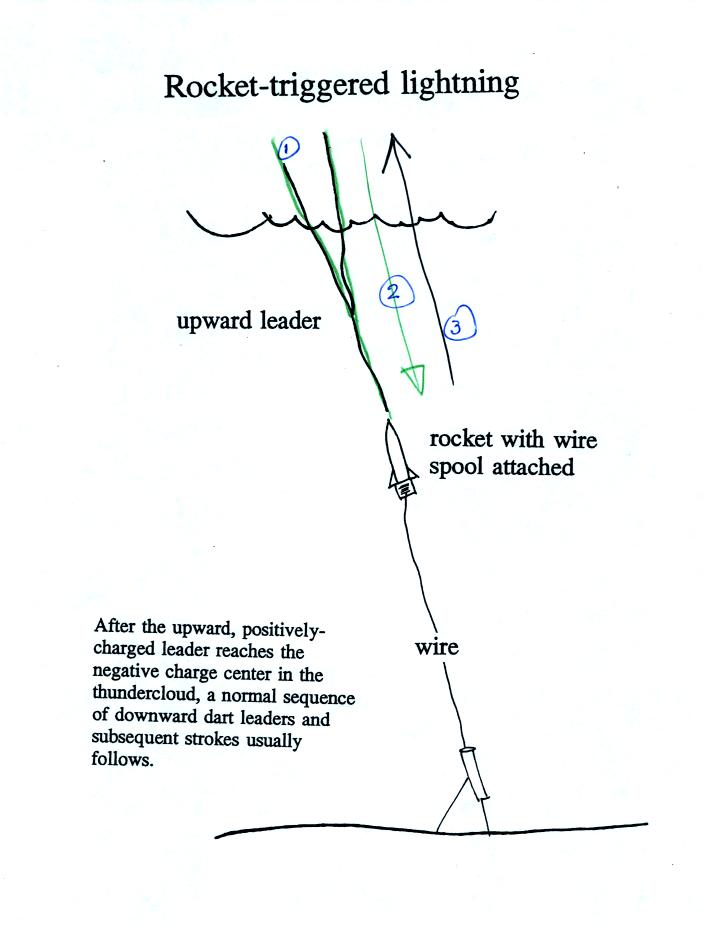
French scientists were the first to perfect a technique of
triggering lightning by firing a small rocket up
toward a thunderstorm. The rocket is connected by a thin wire to
the ground. When the rocket gets 50 to 100 m above the ground
upward lightning will develop off of the top of the wire.
Scientists are able to take closeup photographs and make measurements
of lightning currents using triggered lightning. Triggered
lightning can also be used to test the operation of lightning
protection devices. A short video showing rocket triggered
lightning experiments being conducted in Florida was shown in class.
When the
lightning strikes the sandy soil (instead of striking instruments on
the ground) it sometimes will leave behind a fulgurite (note spelling
in the figure below is incorrect). The end of the video showed
Florida archaeology students digging up some fulgurites.
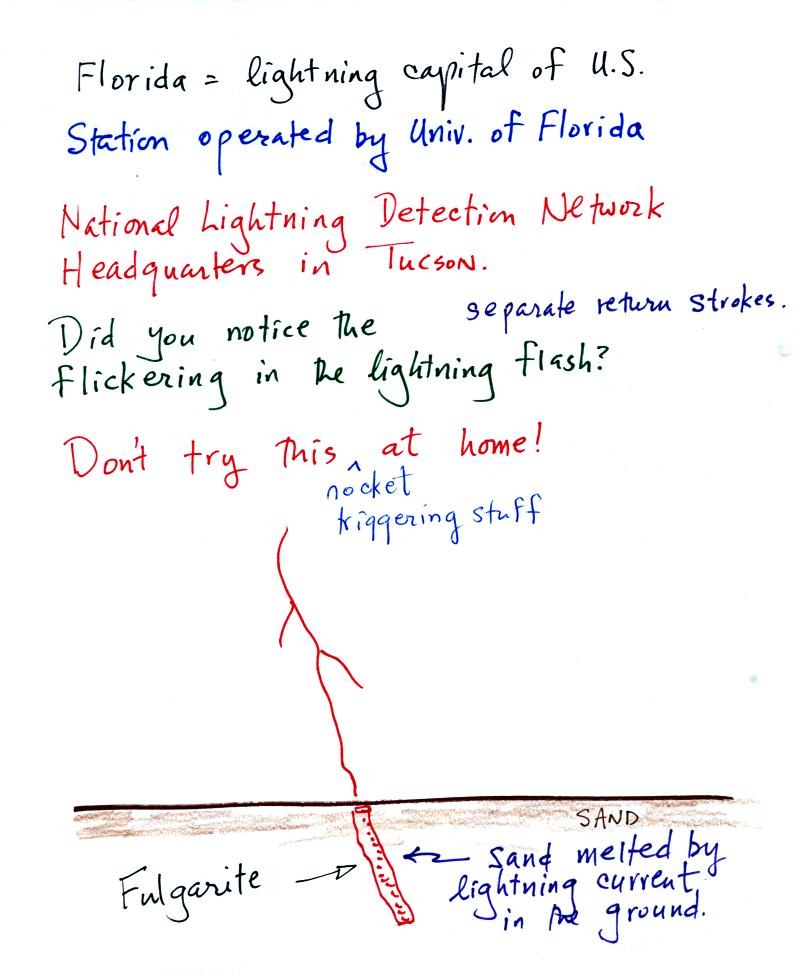
Lightning kills around 100 people a year in the US, it is
worth
learning some lightning safety rules.
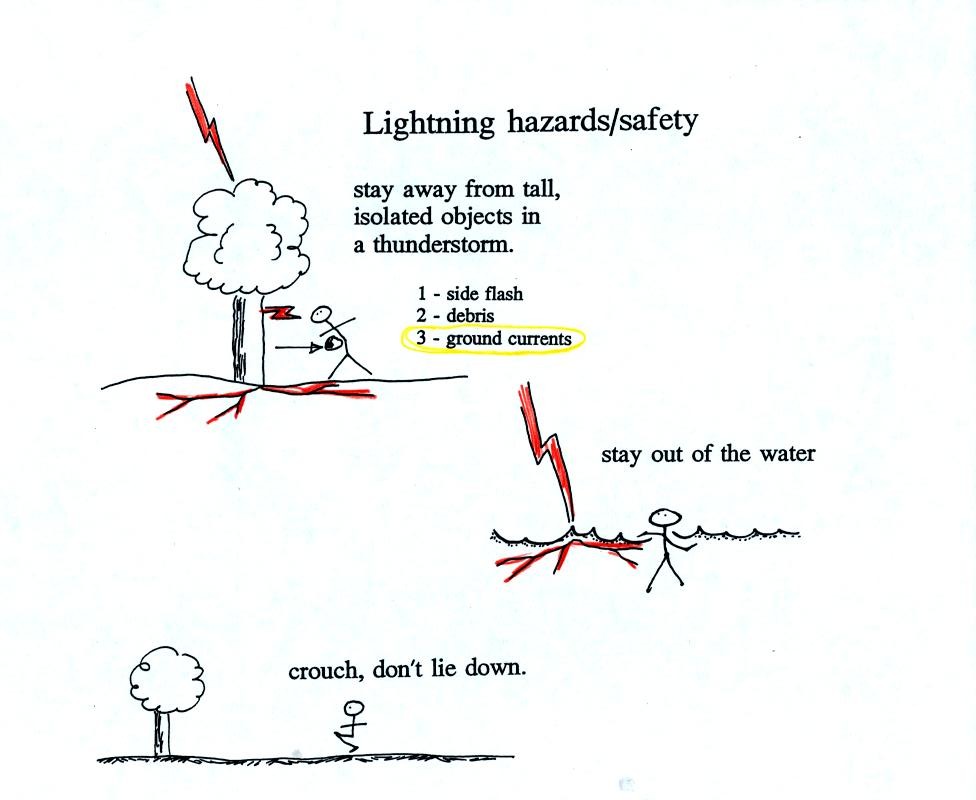
Stay away from tall isolated objects during a lightning
storm.
You can be hurt or killed just by being close to a lightning strike
even if you're
not struck directly. You should also stay out of the ocean or a
swimming pool during a thunderstorm.
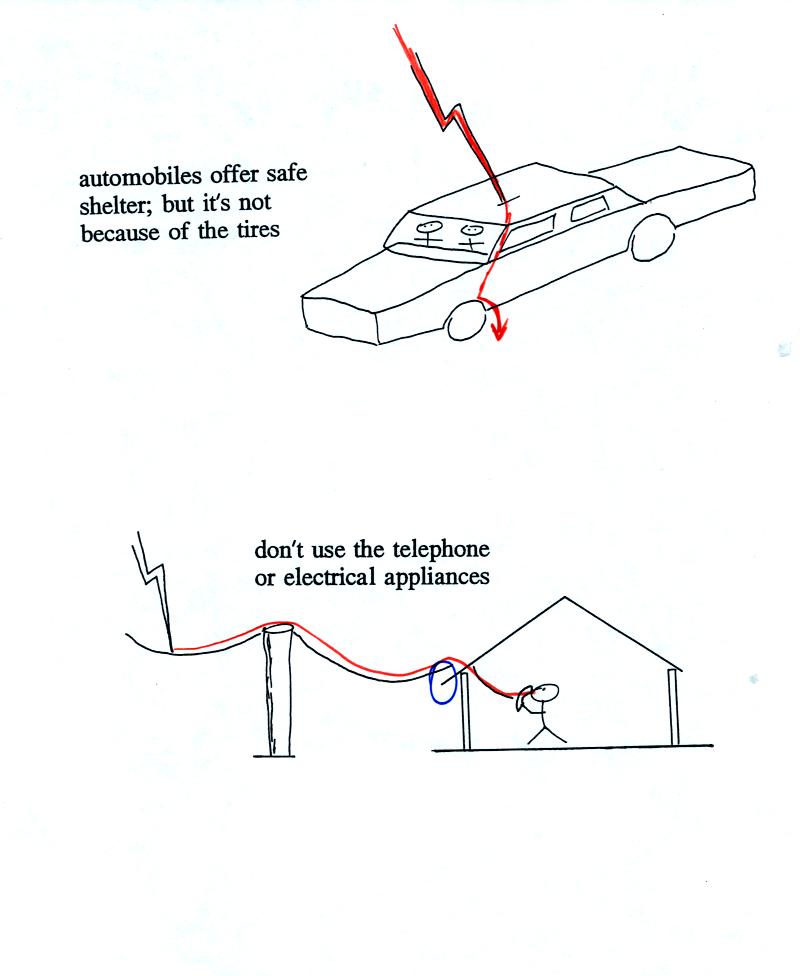
An automobile with a metal roof and body provides good
protection from
lightning. The lightning current will travel through the metal
and around the passengers inside (the people in Florida that were
triggering lightning were inside a metal trailer and were perfectly
safe). The Florida scientists were very careful to be sure
that no wires of any kind came inside the trailer from outside.
You shouldn't use a corded phone and electrical appliances
during a lightning storm because lightning currents can follow wires
(and even the plumbing)
into your home.
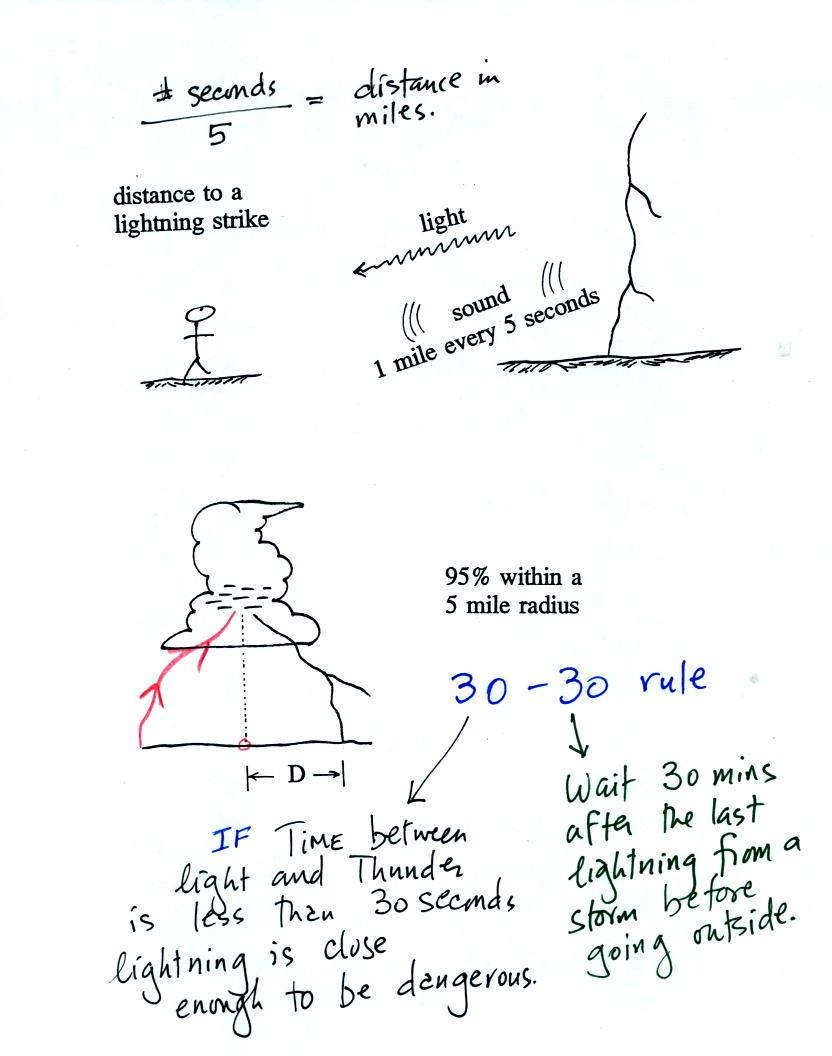
To estimate the distance to a lightning strike count the
number of
seconds between the flash of light and when you first hear the
thunder. Divide this by 5 to get the distance in miles.
If
there is less than 30 seconds delay between the light and the thunder
then the lightning is close enough to present a risk to you. You
should wait 30 minutes after the last lightning before assuming that a
storm has dissipated or moved out of your area.











